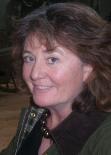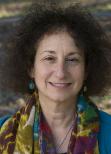Branford Boase Award 2019 – The short list interviews
Q&A interview with Rowena House and Mara Bergman, author and editor of The Goose Road
Q&A interview with Rowena House and Mara Bergman, author and editor of The Goose Road
 Did you always want to write for children?
Did you always want to write for children?
The idea of writing for children hadn’t occurred to me before I became a parent. I’d always wanted to write a novel, and have a half-finished political thriller stashed in a box file in my office, but it was the idea of creating stories for our son that gave me the impetus to really get going. That said, I began to write fiction seriously when Ryan was seven years old; he’s now 19 and has never voluntarily read a single word I’ve written!
What gave you the idea for The Goose Road?
A TV documentary about Professor John Oxford’s theory (now widely accepted) that the terrible Spanish Influenza pandemics of 1918 and 1919, which killed up to 100 million people worldwide, began as a virulent strain of bird flu at the British infantry and hospital base in Étaples, northern France. The film-makers used a photograph from World War I of farmyard geese waiting in a railway marshalling yard to illustrate his idea that infected poultry – geese, ducks or chickens, brought in to feed the troops – was, almost certainly, the original source of the disease. When Andersen Press launched a competition for my year on the MA in writing for young people at Bath Spa University to write a children’s WWI story (with a prize of publication) that photograph immediately sprang to mind. The notion of a young French goose girl’s desperate journey across war-torn France quickly took hold of my imagination.
The book began as a short story. What were the challenges – or rewards – in making it into a novel?
With hindsight, I think there were far more rewards than challenges. Winning the short story competition and being published gave me great confidence the story had ‘legs’. I also knew how and where it had to end, so the short story became the road map of how to get there. I used way-points where the two stories met as benchmarks for the ‘voice’. Had it lost its lyricism? Was it getting too old? The story went through several iterations during the MA, helped hugely by my manuscript tutor, the very talented (and former Branford Boase Award shortlistee) Marie-Louise Jensen, then a full development edit after my first meeting with Mara. In total, with research, writing, re-writing, the submission process, editing, copy editing etc., it took more than three years to complete The Goose Road as a novel. But those way-marks, those benchmarks, were always there to guide me. I found that very helpful.
What was it like working with Mara and what were the main elements in your book that she asked you to work on?
Mara is a marvellous editor. She identified problems with the manuscript very kindly, and supported my editorial decisions about how to fix them. She also helped no end to fine tune the final version, asking for more foreshadowing for the scene with the wild geese, for example, and additional elements to the scene at the Gare d’Orléans. Finally, we had a detailed, two-week email exchange about the wording for the closing kiss! Mara was also adamant that whatever I did, Angelique and her geese couldn’t cause millions of deaths. For me, the original concept about Spanish influenza still lurks within the story, but I completely accept that Mara was right: it wasn’t fair to the reader or to Angélique to make her bear such a burden.
What is the best piece of advice she gave you as a first time author?
Don’t make your protagonist the Angel of Death and expect to get published!
 What most excited you about Rowena’s manuscript when you first read it?
What most excited you about Rowena’s manuscript when you first read it?
So many things excited me! Rowena’s writing struck me immediately. Here was a writer who takes great care with each word of every sentence. Historical fiction lends itself to the literary and The Goose Road is set is during WWI so for me, the writing and the subject and setting (France) all worked exceptionally well together. Rowena’s descriptions are beautifully atmospheric and her characters well drawn. Angelique, her protagonist, is immediately likeable and strong and in her Rowena has created a character we care about from the start. This is nothing to say of the story itself! It is as compelling as it is heartfelt. I knew from the start that The Goose Road was a very special novel indeed.
What would you say are the qualities of her writing that marks her out as a talent to watch?
Coleridge’s definition of poetry, that it is the best words in the best order, comes to mind, because the same holds true for the best writing in any genre. ·Rowena shows great skill in her choice of words and her syntax; each sentence builds on the one before to form a powerful paragraph. She creates a complete world. We not only feel we are in safe hands; we want to stay there.
What’s your favourite scene in the book and why?
There are so many! But if I had to choose one, I would have to choose a scene towards the end of the book which is an absolute triumph. And while I don’t want to spoil the story for anyone who hasn’t yet read it, it’s the scene where a certain goose (and, as you can glean from the title, geese play a major role in this novel) is let loose in the Lion d’Or, a French pub. Once I read this scene, I knew I had to publish the book. ·
What advice would you give any first time author writing historical fiction?
As writers often have to do a substantial amount of research before they can embark on writing a work of historical fiction, the temptation is to put in as much information, as many facts, as they can. Rowena knew instinctively not to do this, but to immerse herself in the research and then forget about it. In other words, she “wore her research lightly”. To do the same would be my advice to other first-time writers of historical fiction.